The approach behind the Employee Provident Fund (EPF) scheme is to provide significant benefit to the employees at the time of their retirement. The scheme specifies that a nominal amount is deducted from the salary of an employee as a contribution towards the fund. According to the latest circular, which has got affected from June 1, 2015, changes have been made regarding the Income-tax rules on the EPF withdrawal by one of the biggest retirement funding associations worldwide, Employee Provident Fund Organization (EPFO).
(Update: Budget-2016)
Payment of an accumulated balance to pay an employee from PF, the threshold limit increased from Rs. 30,000 to limit Rs. 50,000. So, TDS is not applicable if PF withdrawal amount is less than Rs 50,000.
PF Withdrawal Rules associated with TDS
Cases where TDS is not applicable
- If the amount, which is to be withdrawn as PF is less than
Rs. 30000Rs. 50,000. - No tax on pf Withdrawal after 5 years or more of continuous service.
- If an employee withdraws an amount of more than or equal to
Rs. 30000Rs. 50,000 before 5 years but submits Form 15G /15H along with his / her PAN. - When a transfer of PF is from one A/c to another A/c.
- Being an EPF member, if the service has been terminated due to ill-health and he withdraws his accumulation (balance).
- If the employer discontinues the business or any cause beyond the control of EPF Scheme’s member (Employee).
Cases where TDS is applicable
When accumulation is more than Rs. 30000 Rs. 50,000 and the employee i.e. the EPF member has worked less than 5 years, then two cases are there:
- Deduction of TDS will be at 10% if PAN is submitted, but 15G/15H Forms are not.
- Deduction of TDS will be at maximum marginal rate i.e., 34.608% if PAN is not submitted.
Flowchart: TDS on EPF Withdrawal
Some other important key points:
- If the subscriber has submitted all the required forms, then he/she will get an exemption from TDS with no taxable income.
- TDS will be deducted under Section 192A of Income Tax Act, 1961 and it is deductible at the time of payment.
- Form 15G and 15H are self-declarations and may be accepted in duplicate.
- If the amount of withdrawal is beyond 2,50,000 or 3,00,000 respectively, then Forms 15G and 15H cannot be accepted.


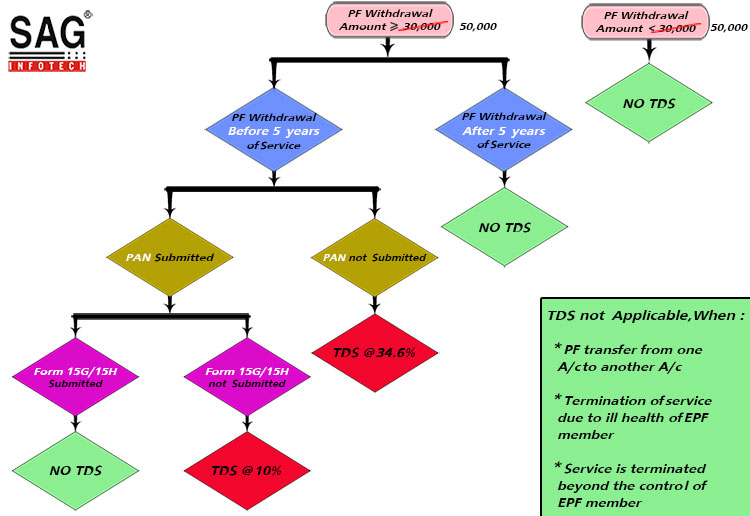

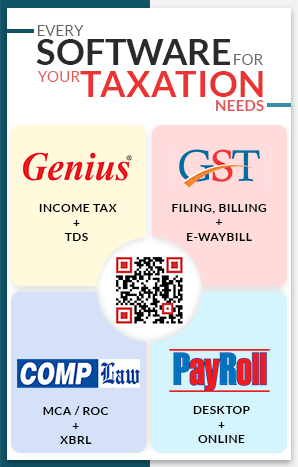
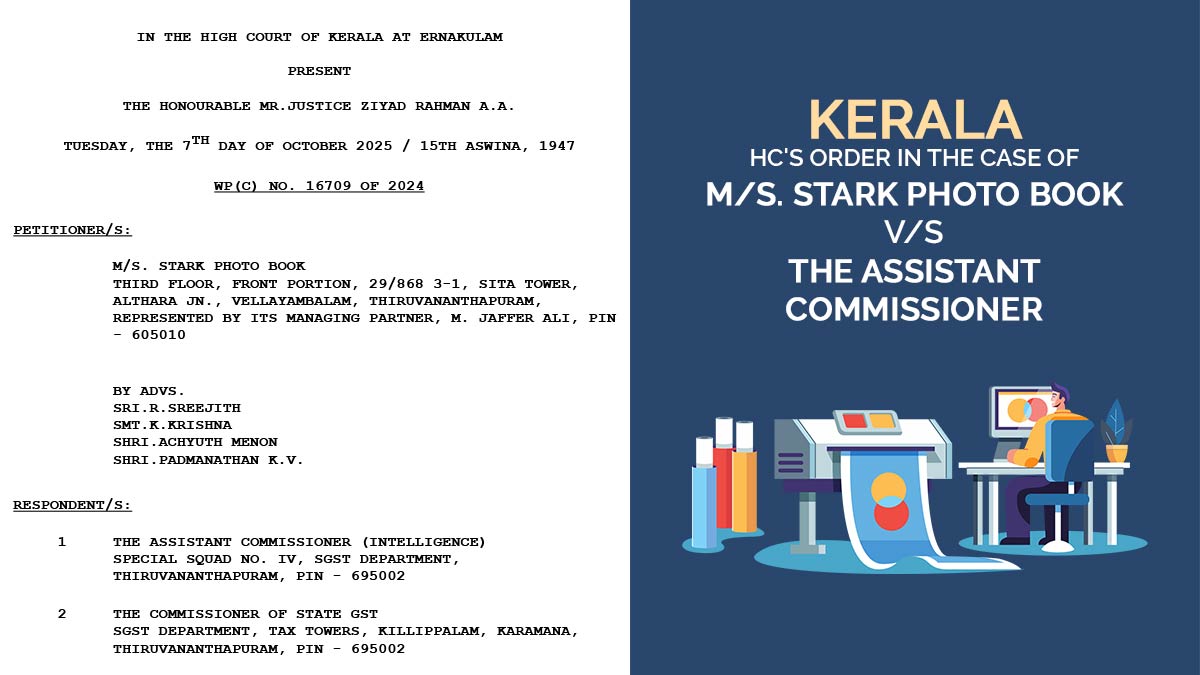
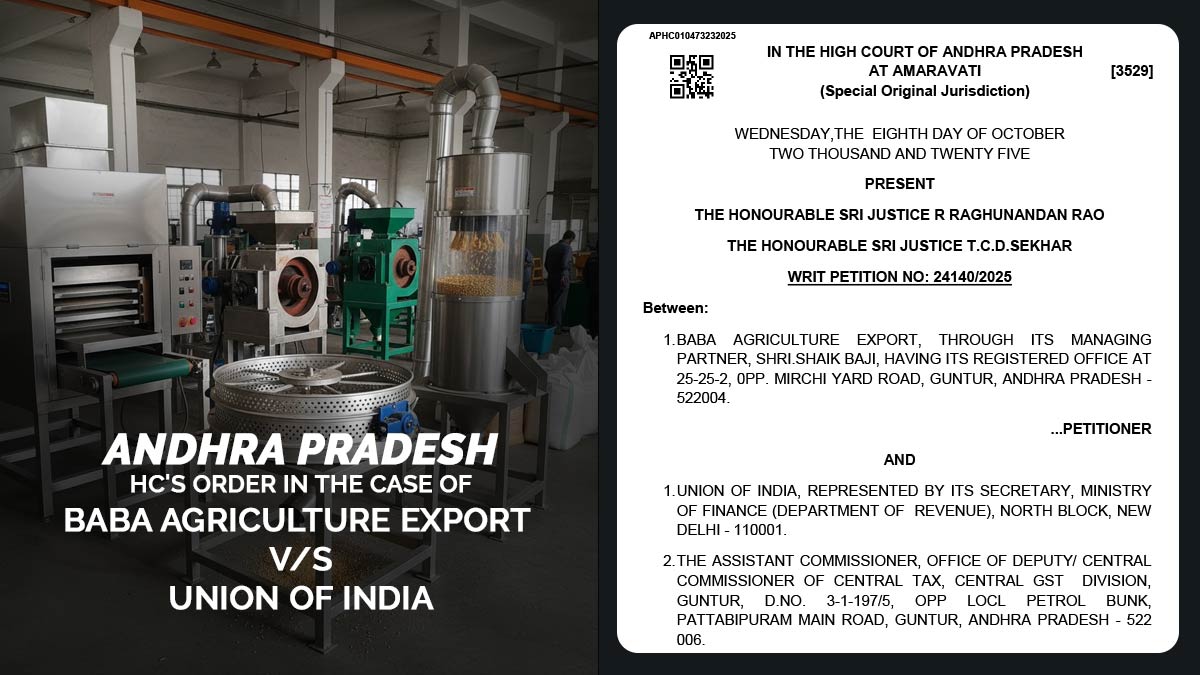


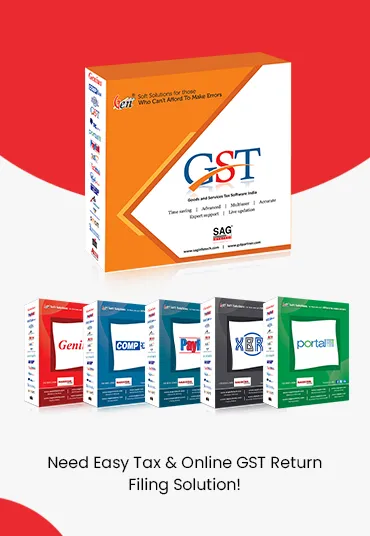

I am jobless from last 4 months, I have 9.8 years of aggregate service (in 2 companies).
I have two queries –
1) Can i withdraw full PF balance ( employee+ employer share) or only employee share + interest ?
2) can i withdraw partial/full EPS amount using offline procedure in some emergency conditions?
As you have completed 5 years of service, you can withdrew full amount i.e. employees ‘s share/ employer’s share with interest.
You have informed that we can withdraw the entire amount of PF (Employee share+Employers share + interest on both) subject to completion of 5 years of service. However, the new PF rule says that Employers contribution can be withdrawn only after attaining the retirement age. i.e., 58 years. Hence, despite our new rule, can we withdraw the entire amount of PF (Employee portion + Employer portion)
Hi,
I worked in the first organisation for 6 yrs 7 months and 4.5 months in second organisation, together nearly 7 yrs, under the same UAN. At what % TDS will be deducted??
My PAN is not verified, though.
Please advise.
Thanks
Hi,
I have worked in my previous org 3 yrs and left 3 yrs ago so the total of 6 years.
Below is the statement received in my E passbook for PF.
Employee Share 86,789.00
Employer Share 45,967.00
What amount will I receive if I withdraw?
Hi,
I received less amount for my pf withdrawal, when I called pf office, the person from pf office told me that some amount got deducted for TDS as I did not submit the 15g form. This was my last organisations’ responsibility to submit the required form or ask me to submit the same before submitting the pf withdrawal forms.
Can I now ask for the refund of the deducted TDS? What is the procedure?
You can only claim the refund by filing income tax return for the concerned period.
SIR
I was employed with a company for a continuous period of 3 years and then changed my job with a new employer where also I am continuing for last three years. Balance in my PF account of the previous employer is lying in old account whereas the balance of new employer is a new account.
MY query is:
1. can I withdraw from Both accounts, if yes then what shall be a tax liability
2. If I withdraw from old account than what shall be the position
Sourabh
You can withdraw from both accounts but as you have not transferred pf amount from old account to new account and also not have completed continuous 5 years of service, the tax will be charged on withdrawals and as well as if your withdrawal amount exceeds 50000/- EPF dept. will also deduct TDS @ 10%.